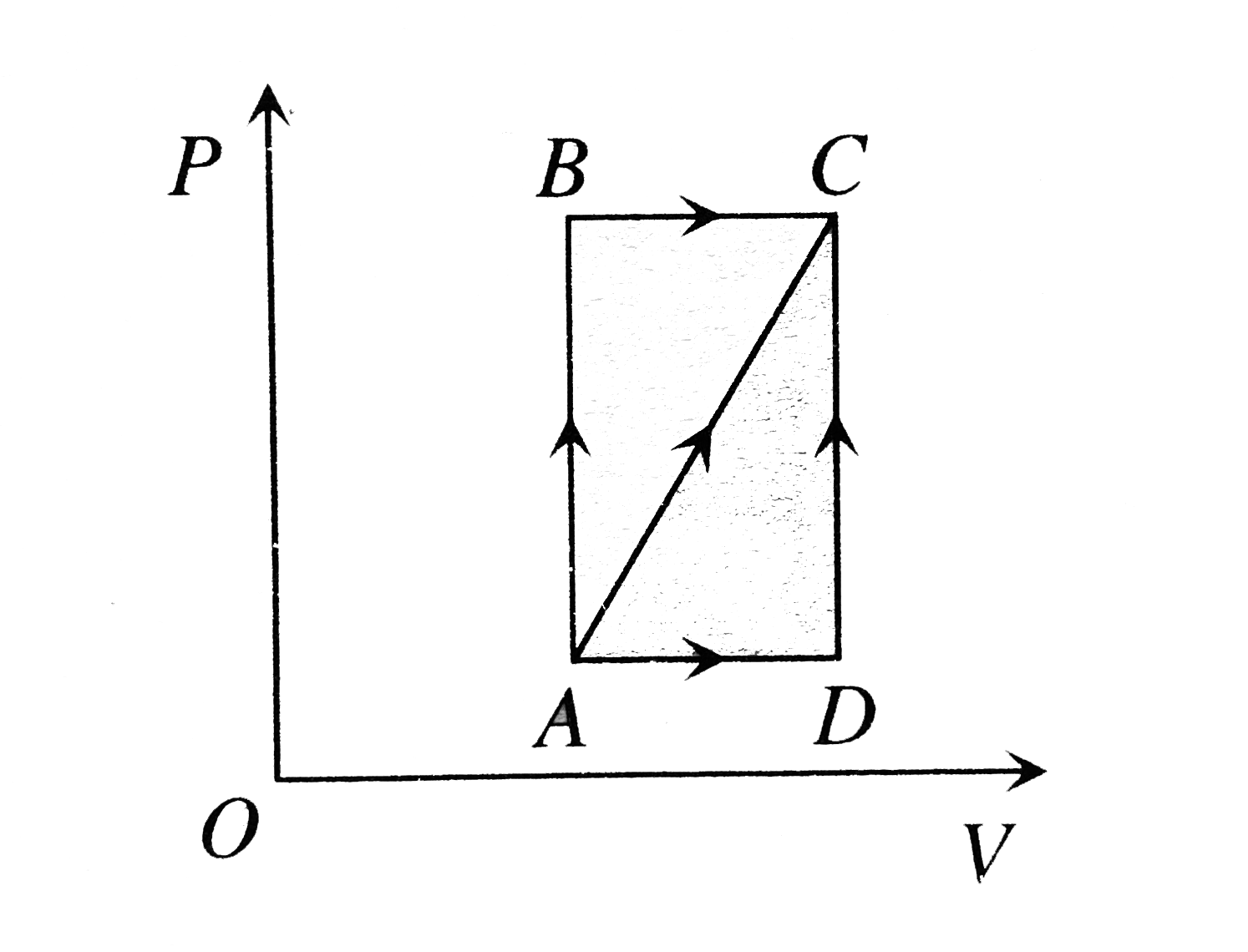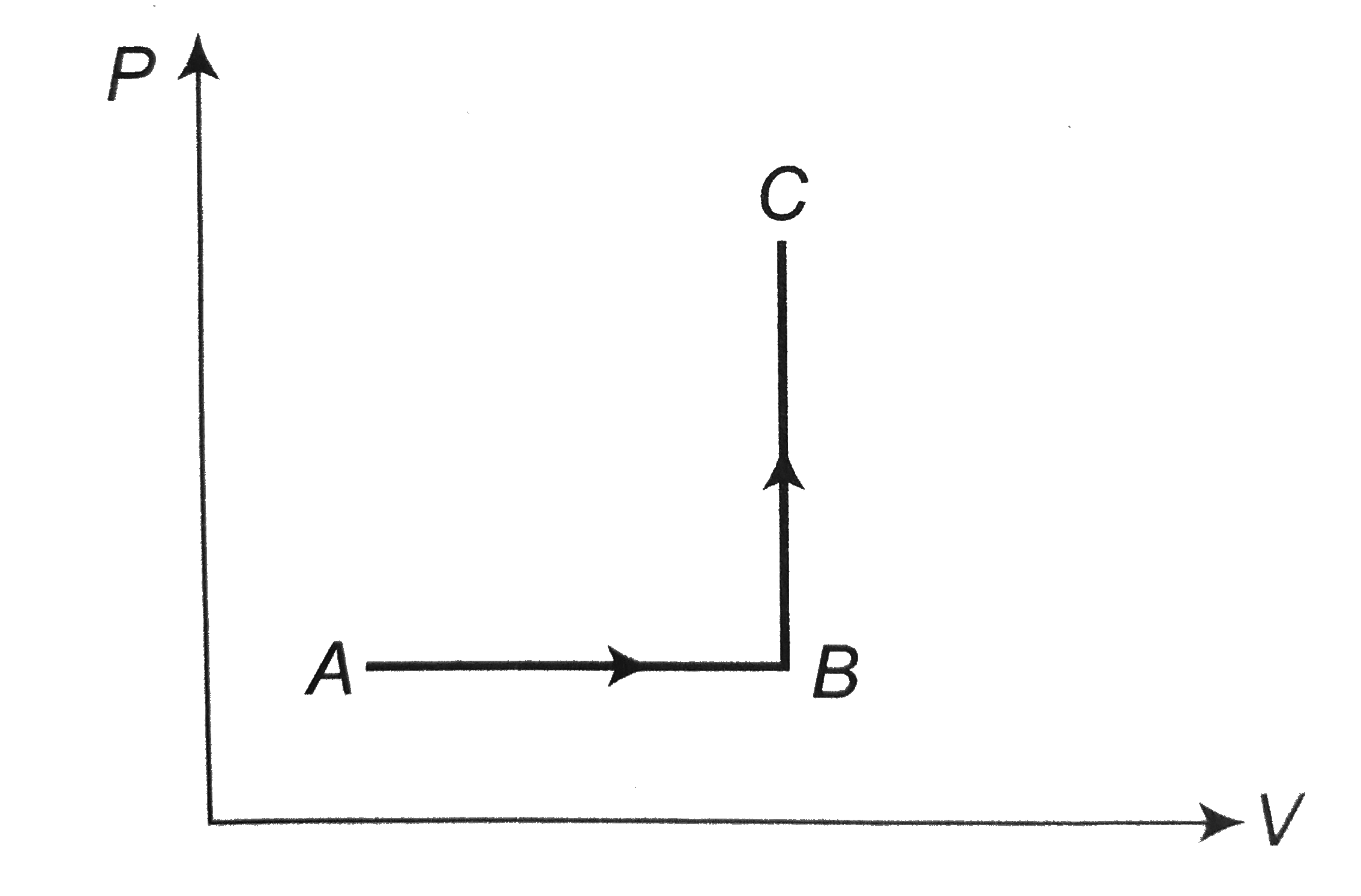In a process, a system does 140 J of work on the surroundings and only 40 J of heat is added to the system, hence change in internal energy is
180 J
−180 J
100 J
−100 J
The correct Answer is:D
To find the change in internal energy of the system, we can use the first law of thermodynamics, which is given by the equation:
ΔU=Q−W
Where:
- ΔU is the change in internal energy,
- Q is the heat added to the system,
- W is the work done by the system on the surroundings.
Step 1: Identify the values
From the problem statement:
- Work done by the system on the surroundings, W=140J (this will be taken as negative in our calculation).
- Heat added to the system, Q=40J.
Step 2: Assign the correct signs
Since the system is doing work on the surroundings, we assign a negative sign to work:
W=−140J
The heat added to the system is positive:
Q=+40J
Step 3: Substitute the values into the equation
Now we can substitute the values of Q and W into the first law of thermodynamics equation:
ΔU=Q−W
Substituting the values:
ΔU=40J−(−140J)
Step 4: Simplify the equation
This simplifies to:
ΔU=40J+140J
ΔU=180J
Step 5: Calculate the change in internal energy
However, we need to remember that the work done by the system is negative:
ΔU=40J−140J
ΔU=−100J
Final Answer
Thus, the change in internal energy is:
ΔU=−100J
---
- ΔU is the change in internal energy,
- Q is the heat added to the system,
- W is the work done by the system on the surroundings.
From the problem statement:
- Work done by the system on the surroundings, W=140J (this will be taken as negative in our calculation).
- Heat added to the system, Q=40J.
Since the system is doing work on the surroundings, we assign a negative sign to work:
W=−140J
The heat added to the system is positive:
Q=+40J
Now we can substitute the values of Q and W into the first law of thermodynamics equation:
ΔU=Q−W
Substituting the values:
ΔU=40J−(−140J)
This simplifies to:
ΔU=40J+140J
ΔU=180J
However, we need to remember that the work done by the system is negative:
ΔU=40J−140J
ΔU=−100J
Thus, the change in internal energy is:
ΔU=−100J
Topper's Solved these Questions
- THERMODYNAMICSBOOK - AAKASH INSTITUTE ENGLISHCHAPTER - THERMODYNAMICSEXERCISE - SECTION-B
20 Videos
- THERMODYNAMICSBOOK - AAKASH INSTITUTE ENGLISHCHAPTER - THERMODYNAMICSEXERCISE - SECTION-C
13 Videos
- THERMODYNAMICSBOOK - AAKASH INSTITUTE ENGLISHCHAPTER - THERMODYNAMICSEXERCISE - TRY YOURSELF
66 Videos
- THE SOLID STATE BOOK - AAKASH INSTITUTE ENGLISHCHAPTER - THE SOLID STATE EXERCISE - Assignment (SECTION - D) (ASSERTION-REASON TYPE QUESTION)
20 Videos
Similar Questions
A thermodynamic process is shown in Fig. The pressures and volumes corresponding to some points in the figure are : PA=3×104Pa,PB=8×104Pa and VA=2×10−3m3,VD=5×10−3m.
In process AB,600J of heat is added to the system and in process BC,200J of heat is added to the system. The change in internal energy of the energy of the process AC would be.

View SolutionA system does 100J work on surroundings by absorbing 150J of heat. Calculate the change in internal energy.
View Solution
Knowledge Check
A system is provided 50 J of heat and work done on the system is 10 J. The change in internal energy during the process is
A40 JB60 JC80 JD50 J.
A thermodynamic process is shown in the following figure. The process and volumes corresponding to some points in the figure are:
PA=3×103Pa,
VA=2×10−3m−3,
PB=3×104Pa,VD=2×10−3m3
In process AB,600J of heat is added to the system and in the process BC,200J of heat is added to the system. the change in internla energy of the system in the process AC would be

View SolutionIf 150 J of heat is added to a system and the work done by the system is 110 j. then change in internal energy wil be
View Solution160 J of work is done on the system and at the same time 100 J of heat is given out. What is the change in the internal energy ?
View SolutionIn a process, 701 J of heat is absorbed by a system and 394 J of work is done by the system. What is the change in internal energy of the process?
View SolutionIn a process, 701J of heat is absorbed by a system and 394J of work is done by the system. What is the change in internal energy for the process?
View Solution180 J of work is done on the system and at the same time 120 J of heat is given out. What is the change in the internal energy?
View SolutionThe P−V diagram of a system undergoing thermodynamic transformation is shown in figure. The work done by the system in going from A→B→C is 30J and 40J heat is given to the system. The change in internal energy between AandC is

View Solution
